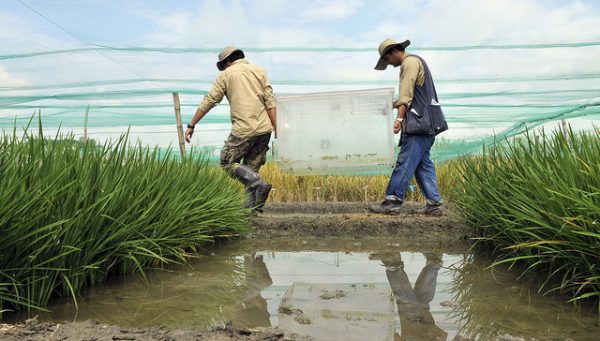The 60th anniversary provides a useful opportunity for reflection and renewal and to chart a course for the next decade. To this end, the Japan International Cooperation Agency Research Institute (JICA-RI) has formed a group of domestic and international researchers and practitioners to reflect on Japan’s aid record up to now and to suggest directions for the post-2015 development agenda.
Japan’s Official Development Assistance (ODA) program has undergone significant transformations, in its scale, programs and objectives, and in its geographical reach and domestic policy players.
Aid has and will continue to be a key diplomatic tool in Tokyo’s foreign policy kit. From initially modest contributions, Japan’s aid budget grew through its ‘economic miracle’. By the late 1980s Japan emerged as the world’s largest aid donor: a position it held for roughly a decade. Following its prolonged economic downturn, Japan has slipped to fifth on the OECD donor table, but, with an annual budget of US$10 billion, it remains a significant donor internationally. It is likely to remain so for many years to come.
Japan’s bilateral aid, focused largely on Asia for at least three decades, is now far more geographically diversified. Africa, Latin America and the South Pacific are now all on its radar. Asia itself is much more prosperous than even a decade ago. Countries like South Korea and China that once received large amounts of aid from Japan have graduated from recipient status. As significant donors themselves, they draw from their experience of Japan as their major donor.
Japan’s contribution to Asia’s development story through its aid program cannot be understated. Waste and corruption associated with some country-specific aid programs in the region have largely been corrected thanks to critical and constructive responses from academics, civil society, non-government groups and the media, at home and abroad.
But Japan’s foreign aid program was for a long time been essentially devoid of a guiding philosophy. Aid policies were made largely inside the Japanese bureaucracy, with dozen of ministries and agencies involved, each pursuing its own narrow, sectional interests rather than being informed by clear policy objectives. What foreign aid was actually to achieve — and for whom — was not clearly articulated.
Today the long-standing administrative landscape of multiple aid-related ministries remains largely intact. But some key reforms at the institutional and policy level have been undertaken in recent years. To streamline the yen loan program, for example, the Overseas Economic Cooperation Fund (OECF) was merged with the EXIM Bank of Japan in 1999 to become the Japan Bank for International Cooperation (JBIC). Nine years later in 2008, as a result of reforms of Japanese state-owned banking institutions, JBIC’s yen loan and grant aid sections were amalgamated with the New JICA. The New JICA, as it is known, was created in 2008 to bring together the three key aid programs — grant aid, yen loans and technical cooperation — within a single aid institution.
The agency is now the world’s largest for bilateral aid programs and is no longer headed by a foreign affairs official. From 2003–2012 JICA was headed by the high-profile academic, UN diplomat and respected administrator Sadako Ogata. Since 2013 it has been the distinguished international relations scholar from Tokyo University, Professor Akihiko Tanaka.
In response to criticism that its aid program lacked a philosophy, Tokyo finally issued an ODA charter in 1992. This was revised in 2003. The Charter outlined purposes and principles, but implementation of those principles was uneven. Japan has increasingly used ODA as a political instrument to serve Japan’s diplomatic and strategic interests, including support for its key ally, the United States.
But as the geo-strategic landscape has evolved, Japan’s economy has stagnated. This year the Abe Government established a committee to review the 2003 charter and make recommendations for a revision that reflects appropriate responses to changing domestic and regional circumstances.
The gist of the current draft charter (circulating in policy circles but not yet in the public arena) is that while retaining some traditional policy objectives of economic development — protection of the natural environment, human rights and so forth — the aid budget will also be directed towards areas of ‘security’ and ‘defence’ to serve Japan’s national interest.
Never before has Japan’s ODA charter (ODA taiko) emphasised national interest, security, defence and pursuit of active pacifism. In fact, the title of this charter has abandoned the term ODA altogether. Instead it presents a Development Cooperation Charter (kaihatsu kyoryoku taiko) that reaches beyond ‘development’ into the ‘security’ arena, including indirect military assistance to maintain global peace and security and manage natural disasters.
Explicit use of foreign aid to serve national security will raise some eyebrows within Japan, but it will raise many more externally. In China this new development is likely to be seen as a strategic move to curb China’s rising influence and military assertiveness in the region. Development assistance for ‘peace’ and ‘security’ gives a new meaning to ODA in the new charter.
The content of the new draft Charter puts paid to the criticism that Japanese political leaders take little interest in foreign aid policy since it is made by bureaucrats and not likely to win votes. Drafted with one eye on the political agenda of the Abe government, the new charter moves ODA firmly into the arena of domestic politics. This influence will have international geopolitical ramifications.
Purnendra Jain is Professor of Asian Studies at the University of Adelaide.

